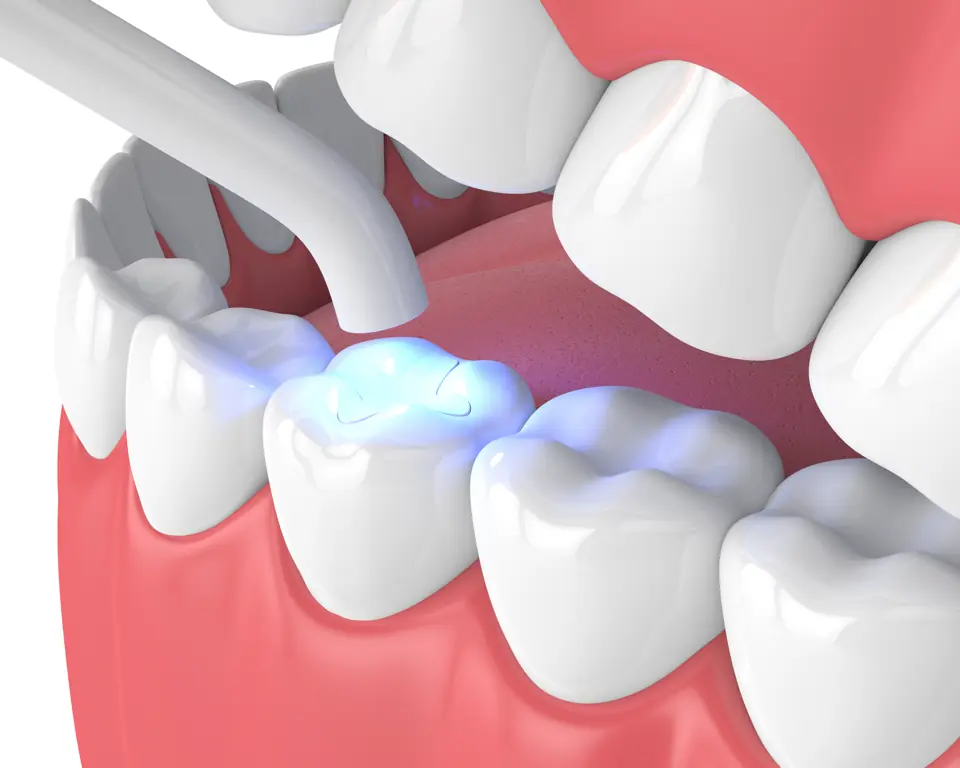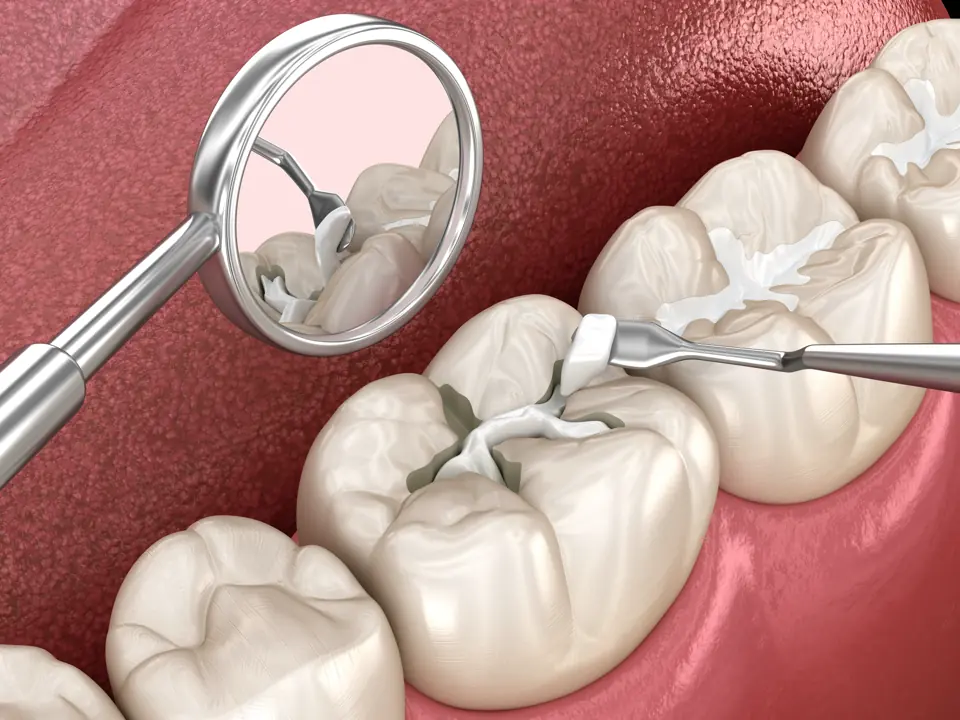What Are Composite Fillings?
Composite fillings, also known as tooth-colored or white fillings, are a type of dental restoration used to repair teeth affected by decay or damage. These fillings are made from a mixture of resin and finely ground glass particles, creating a durable and natural-looking material.

What Are Cavities?
Dental decay is sometimes referred to as a cavity in the tooth. On an x-ray, it’s a little dark splotch that’s eating away at your tooth. If you don’t get treatment, eventually, the cavity will consume the tooth and may spread to other teeth. Fortunately, cavities are easy to treat. We just remove the infected tissue and replace it with a filling.
Advantages of Composite Fillings
The advantages of composite fillings include:
- Aesthetic appeal. Composite fillings blend seamlessly with the natural color of your teeth, providing a more aesthetically pleasing result compared to traditional silver amalgam fillings.
- Tooth preservation. Composite fillings require less removal of healthy tooth structure during the preparation process than more intense procedures do, preserving more of the natural tooth.
- Versatility. Composite fillings can be used for both front and back teeth, making them a versatile option for addressing decay in various areas of the mouth.
- Mercury-free. Unlike amalgam fillings, composite fillings do not contain mercury, so you won’t have to worry about potential mercury exposure.
The Composite Filling Process
If you’re concerned about a toothache, or we find a cavity at your checkup, we may recommend that you get a filling. The composite filling process is simple.
Before recommending composite fillings, our experienced dentists conduct a thorough examination to assess the extent of decay or damage. X-rays may be taken to determine the precise location and severity of the issue.
Next, the affected tooth is prepared by removing the decayed or damaged portion. Unlike crowns, inlays, and onlays, which require more extensive tooth preparation, composite fillings allow for a more conservative approach.

The Art of Restoring Your Smile
Finally, the composite material is applied in layers and bonded directly to the tooth. Each layer is cured with a special light to harden the material. After shaping and contouring, the filling is polished to achieve a smooth and natural appearance.
Caring for Composite Fillings
Once you’ve gotten all the decay cleaned out and your fillings are finished, you’ll need to make sure to take good care of your teeth to keep your fillings in top condition. We recommend:

Good Oral Hygiene Practices
Maintaining good oral hygiene is crucial for the longevity of composite fillings. Regular brushing, flossing, and routine dental checkups help prevent new decay and ensure the overall health of your restored teeth.
Avoiding Staining Substances
While composite fillings are resistant to staining, it’s advisable to minimize exposure to substances like coffee, tea, and tobacco to preserve the aesthetic appeal of the fillings.
Regular Dental Checkups
Routine dental checkups allow our team to monitor the condition of your composite fillings, assess their integrity, and address any concerns before they become more significant issues.
